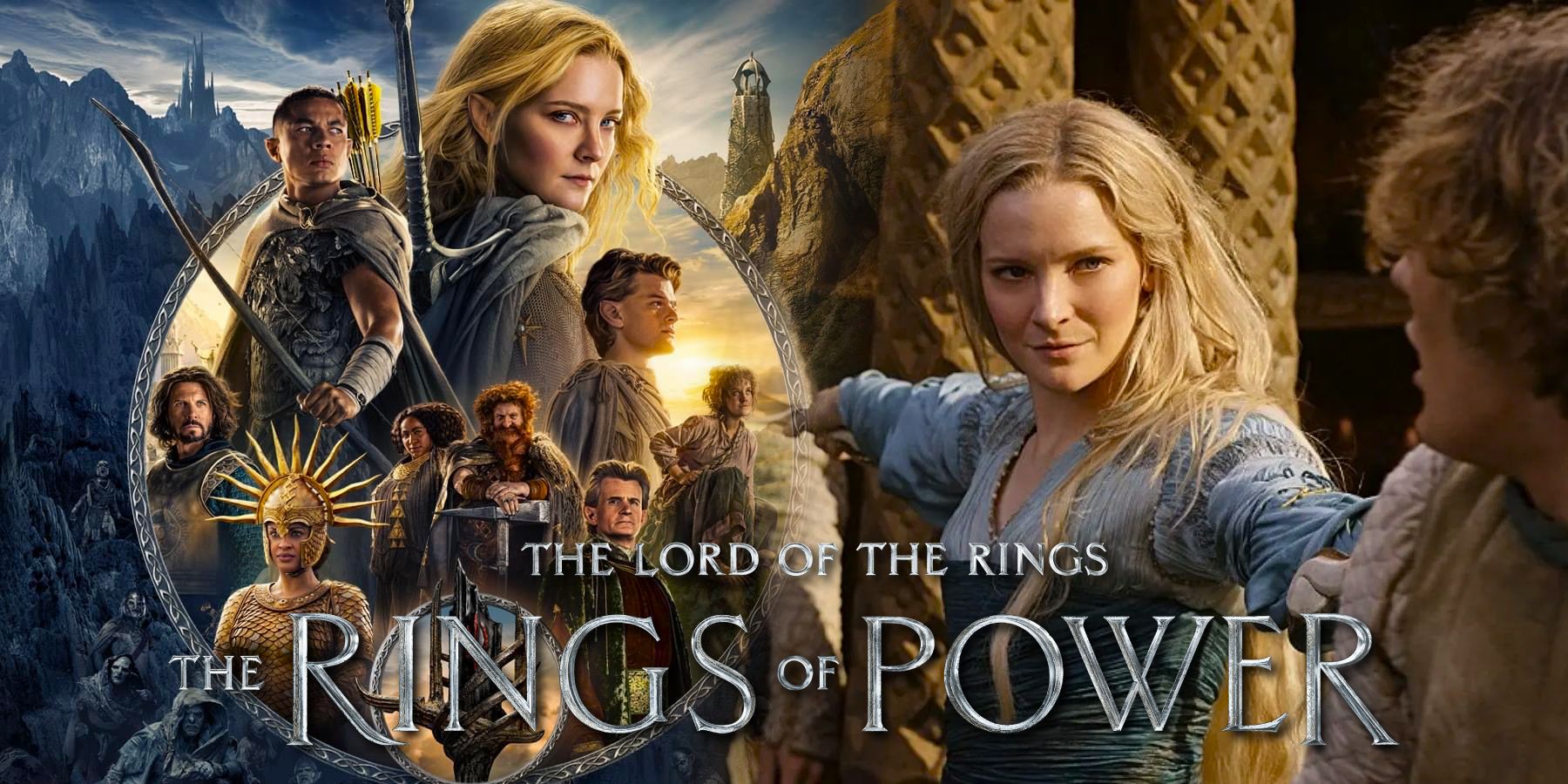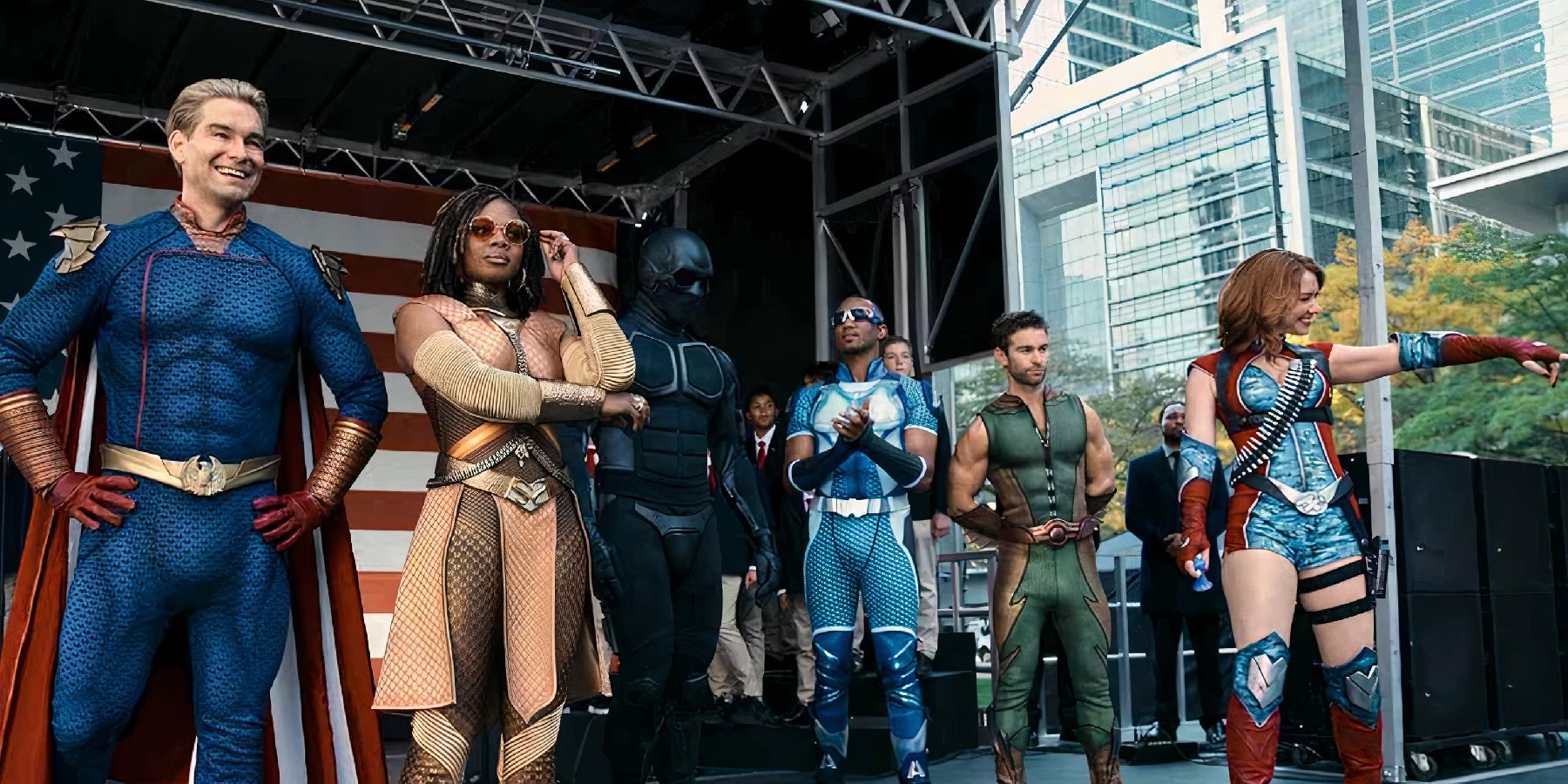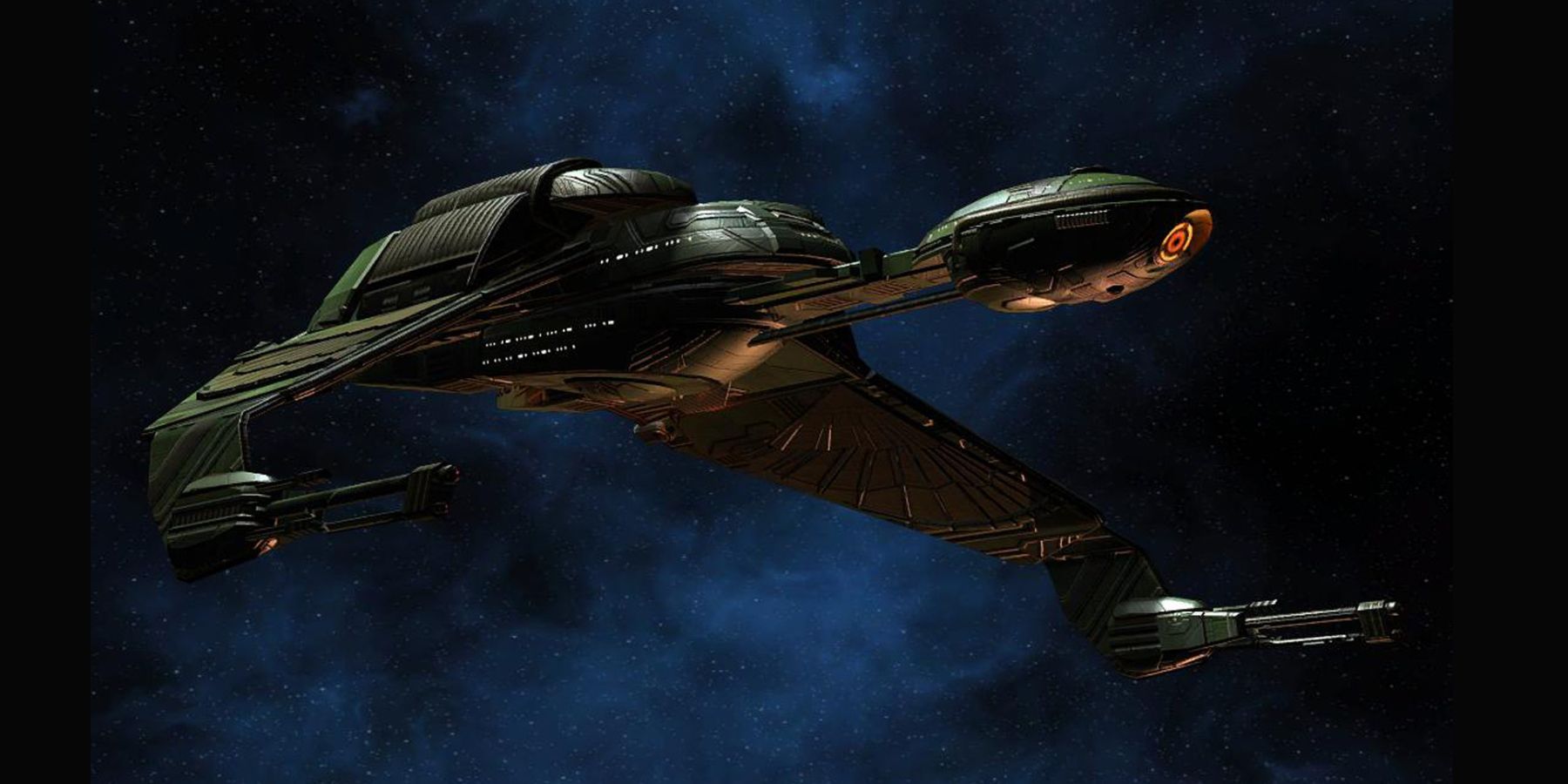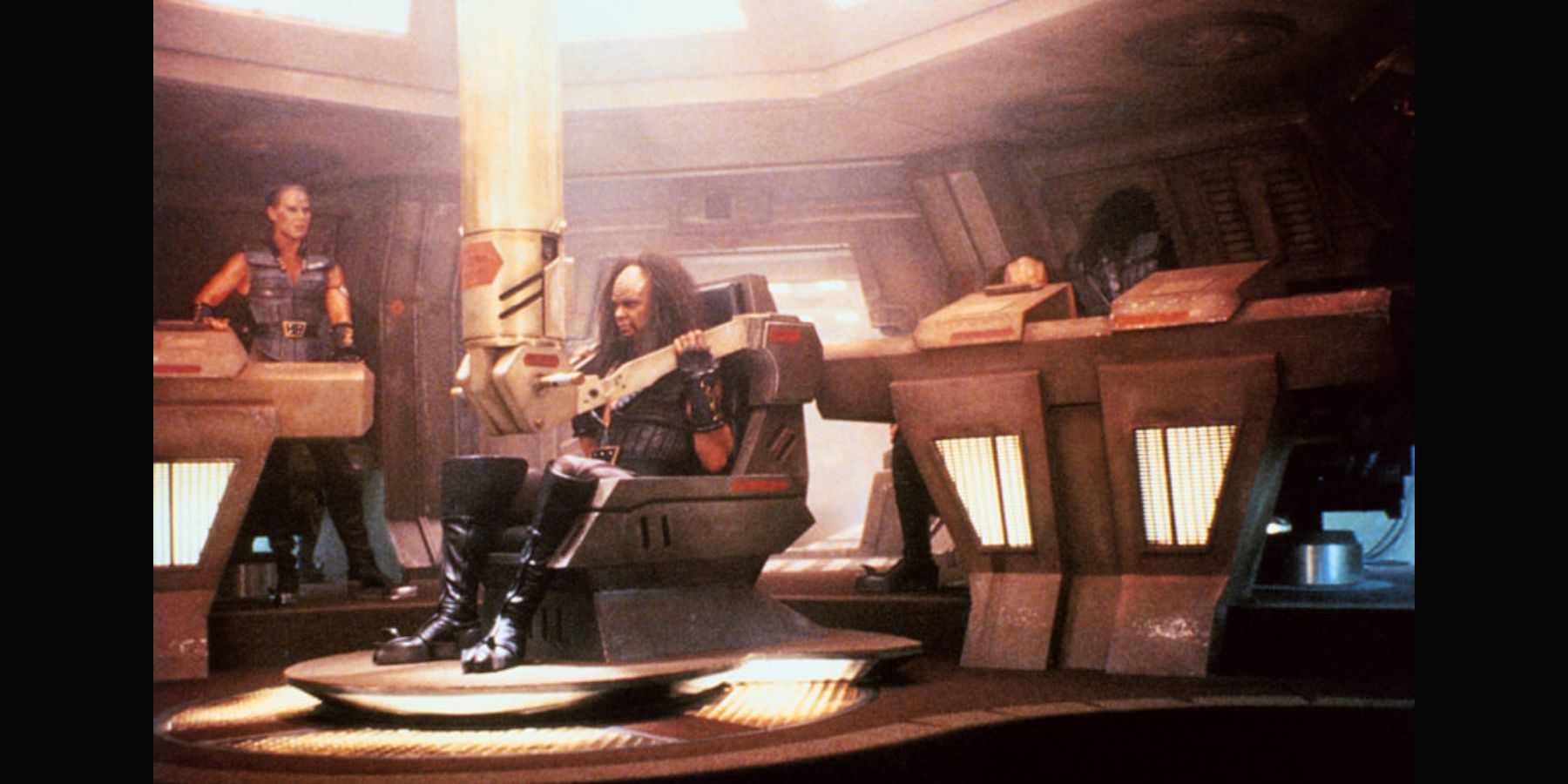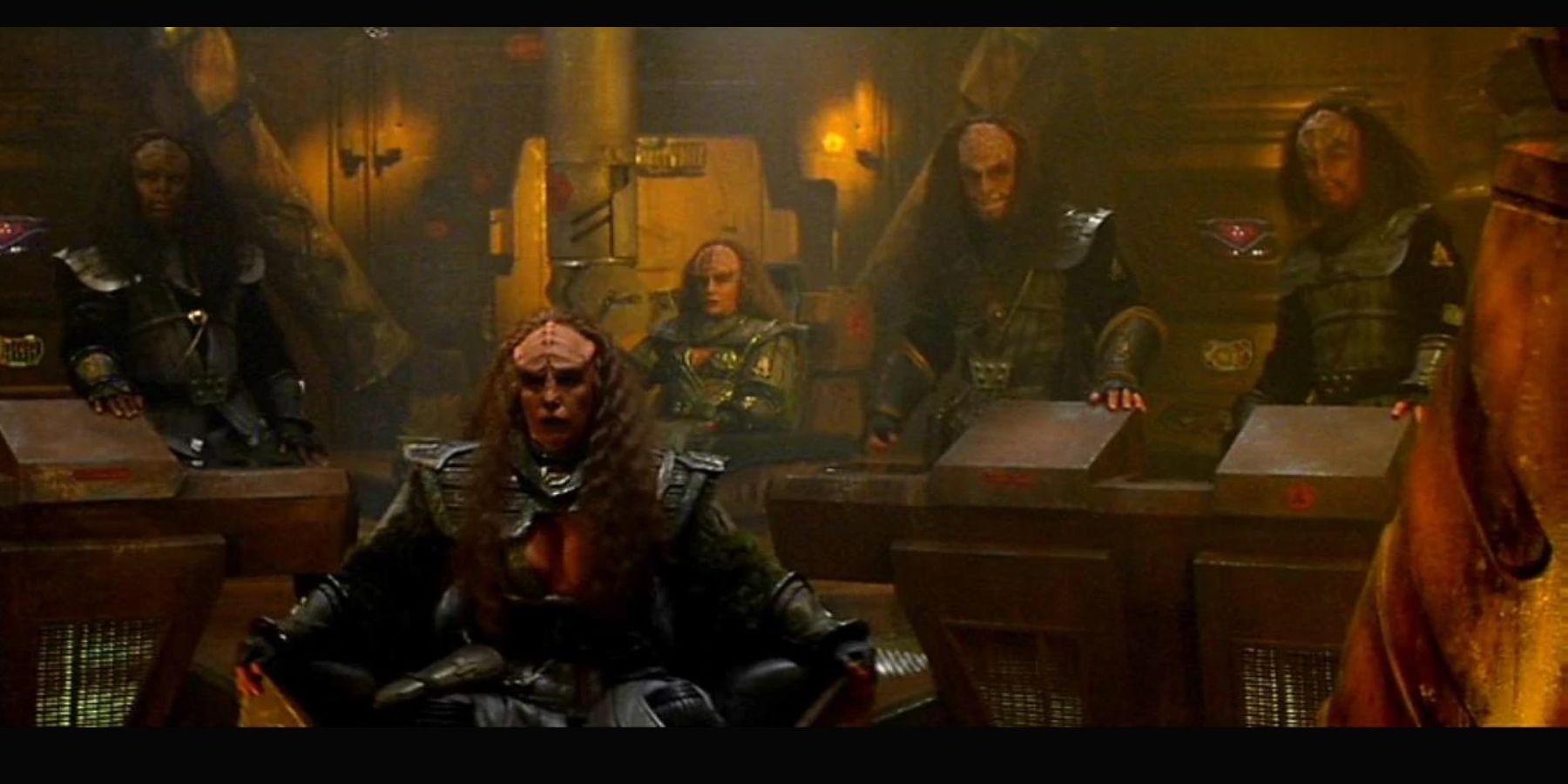The wonderful and expansive world of Star Trek has been the birthplace of various things over the years. It has influenced modern day commodities such as touch screen tablets, all the way to setting a pretty strong precedent for what a science fiction, space-faring TV show should be. The shows have created a large array of iconic ship designs, each one easily recognizable to each of the various races and cultures found within the franchise. It is interesting to examine these, as they are often representative of, one way or another, of the culture they belong to. However, none of them are so reflective as the Klingon Bird of Prey, and their iconic bridge.
The Klingon ships were first introduced in the surprisingly political Original Series, and over the many iterations into the Star Trek universe, they have pretty much stayed the same. There have been various changes over the years, though none as drastic as the changes to the actual Klingon race appearance, but they have pretty much solidly stuck to the overall vibe on their ships bridges. They are normally shown to be dark, steamy, and cramped. These characteristics were specifically chosen by the show's writers and designers as they perfectly represent the various facets of Klingon biology and culture. They serve as a perfect example of how set design can tell a narrative all of its own, summarizing an entire culture with just an overall look and feeling.
Klingons were all about the drive and thrill of battle, and the honor it brought. They are a culture obsessed with this, throwing aside all suggestions of comfort or luxury, much preferring to be down in the proverbial mud fighting some mighty foe. Their ships and bridges mirror this, being designed for battle rather than comfort. A Klingon fleet of ships would be almost entirely designed for battle, rather than the Federation and other races who had various classes focusing on science and exploration. Klingon ships were for war, and thus were designed to mimic old WWII submarines, including the inclusion of a somewhat comical periscope the Klingon captain would often use instead of a view screen. While the Enterprise was based somewhat on similar warships, they chose to take the design in a different direction.
The WWII submarines they were based on were built to be somewhat cramped, making use of every single bit of available space, without wasting it on various necessary luxuries. When looking at the bridges of other ships from the show, such as the Enterprise D, it’s clear that a lot of their bridges are just open, wasted space. This space serves no function other than to be luxurious, or even to act as a display of wealth. While Gene Roddenberry did not have as many design stipulations as he did for the Enterprise, he knew that he wanted the Klingons to not care about this. Their bridges should be optimized for the ease of actually using them, making them no bigger than it needed to be, but also big enough that they could have a proper fight if needed.
WWII submarines were also most often stereotyped to be bathed in moody lighting, often lit with red lights and long dark shadows in the corners. This is a bit of a myth, as while they do use red light, it’s not a constant thing aboard a vessel; rather, it's a tool they use to adjust from the normal white well light conditions to darkness. However, this image makes sense in a Klingon ship. In addition to feeling aptly moody to reflect the Klingon culture, there are various speculations as to why, in universe, the Klingon empire chose to light their vessels in warm reds, oranges, and yellows. The Klingon home world Qo’noS, where Klingons grew, evolved, and became the Klingons audiences know and love orbits a Late K orange dwarf star. This means that their natural habitat has a much darker, reddish hue to it. It would stand to reason then that they evolved to have much better eyesight, being able to see perfectly well in lighting that humans might struggle with, and the natural light they choose for their homes and ships is the same reddish yellow.
As to why the ships were so steamy, there are two likely reasons. The in-universe explanation is that spaceships, due to the incredible amount of power they produce, would theoretically create a lot of heat. Cooling them then would require a lot of effort and power, but Klingons are used to a hotter climate, as well as being far more resistant to varying temperatures. Theoretically, then, they would not bother dispersing too much of the heat and steam produced, seeing it as an unnecessary luxury. The non-canon version is that it is a common TV trope used to make things look spooky and vaguely evil. Independence Day and Prometheus use the same technique, which is most commonly to show that these people are dark and gloomy. The set designers on Star Trek do this a lot, with other examples of smoky ships belonging to the Borg, Mallon, and Hirogen races.
The Klingon bridges of old are instantly recognizable, and do a masterful job of instantly summing up various aspects of Klingon culture. These are of course heightened stereotypes of their culture, the reality being filled with much more nuance and layers than could be summed up instantly in a set. But when it comes to what can be expressed in a single set, they capture the overall vibe the writers wanted to sum up these angry, hairy warriors of epic degrees.


